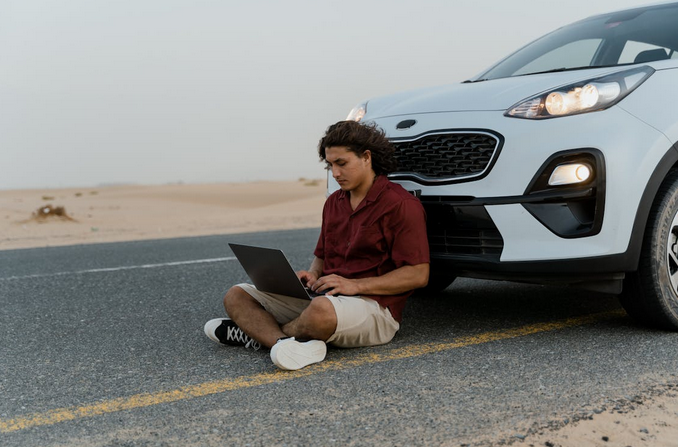Mistakes to Avoid When Replacing Your Old Car
Replacing an old car can feel like a fresh start. The idea of newer features, better mileage, and fewer repair bills is exciting. But in the rush to upgrade, many people fall into common traps that turn a good decision into a costly one. It is easy to get swept up by slick ads, fast-talking salespeople, or even your impatience. That is where problems start. Whether you are buying new or used, financing, or paying upfront, there are choices along the way that can either save you money or waste it. This is not just about what car you buy. It is about how you make the decision. A little extra care can go a long way. Many mistakes are avoidable if you know what to watch out for. So before you trade in those old keys, take a moment to slow down and think clearly. Here are some of the most common missteps to avoid when replacing your old car.
Skipping the Budget Reality Check
Before you even look at cars, take a hard look at your finances. Many people make the mistake of only focusing on monthly payments. That number might seem manageable, but it does not show the full cost. Add up insurance, maintenance, taxes, and interest. Suddenly, that affordable deal is not so affordable. Some buyers stretch their budget too thin just to drive something flashy. It feels good at the moment but leads to stress later. Others rush into financing without comparing rates, ending up with unfavorable terms that last for years. Take time to get pre-approved through your bank or credit union. That gives you a clearer picture of what you can afford and puts you in a stronger position when negotiating. The goal is not just to buy a car. It is to buy a car that fits your life, not just your wishlist.
Falling for Features You Do Not Need

Modern cars come packed with features. Heated seats, fancy displays, automatic everything. It is tempting to want them all. But chasing extras can add thousands to the price without adding real value to your daily drive. Many people overpay for tech they rarely use or do not fully understand. Others pick a higher trim level just because it sounds better. Instead, focus on what matters for your lifestyle. Do you need better gas mileage? Extra cargo space? All-wheel drive? Start with those needs, then filter the options. It is easy to be dazzled at the dealership, especially with shiny interiors and persuasive upgrades. But remember, those extras are part of the dealership’s profit strategy. Stick to what matters. You will save money and avoid regret later on.
Not Researching the Vehicle’s History or Reputation

If you are buying used, skipping research can be a costly mistake. A clean-looking car can still hide a rough past. Always ask for a vehicle history report. Check for accidents, title issues, or repeated repairs. But go further than that. Look up owner reviews, recall information …









 Braking suddenly or accelerating too quickly is not a friendly gesture to your brake system. Smooth transitions between acceleration and braking can be much easier on the brakes, reducing wear and tear throughout the system. Driving smoothly also helps minimize the stress put on the rest of your car’s components, leading to better performance overall.
Braking suddenly or accelerating too quickly is not a friendly gesture to your brake system. Smooth transitions between acceleration and braking can be much easier on the brakes, reducing wear and tear throughout the system. Driving smoothly also helps minimize the stress put on the rest of your car’s components, leading to better performance overall.

 Your brakes should be inspected every time you change your oil and replace when they show signs of wear and tear. Make sure that you have a professional inspect your brakes if there are any signs of problems to ensure they are safe to operate. It is advisable to check brake systems every 12 months or 12,000 miles. It’ll ensure that your brakes are working properly and reduce the risk of accidents.
Your brakes should be inspected every time you change your oil and replace when they show signs of wear and tear. Make sure that you have a professional inspect your brakes if there are any signs of problems to ensure they are safe to operate. It is advisable to check brake systems every 12 months or 12,000 miles. It’ll ensure that your brakes are working properly and reduce the risk of accidents.
 Washing the car keeps it shiny, clean, and corrosion-free. When dirt particles accumulate, they are abrasive, while liquids like juices and sodas can be corrosive. Also, vacuum the interior of your car and wipe lenses on your dashboard with a damp cloth. Take out car mats and hose them down to remove dirt that otherwise wears out your mats, and ensure you dry them well before replacing them in the car.
Washing the car keeps it shiny, clean, and corrosion-free. When dirt particles accumulate, they are abrasive, while liquids like juices and sodas can be corrosive. Also, vacuum the interior of your car and wipe lenses on your dashboard with a damp cloth. Take out car mats and hose them down to remove dirt that otherwise wears out your mats, and ensure you dry them well before replacing them in the car. As much as possible, avoid eating inside your car. You can also cover surfaces and keep floor mats to prevent grinding mud in the carpets. Seat covers will help you protect the car seat upholstery and aid your posture, customizing the car’s outlook. Also, ensure you regularly vacuum the car and keep the windows slightly open when you live in hot regions. The hot air inside the vehicle can dry and damage the interior when it can’t escape out.
As much as possible, avoid eating inside your car. You can also cover surfaces and keep floor mats to prevent grinding mud in the carpets. Seat covers will help you protect the car seat upholstery and aid your posture, customizing the car’s outlook. Also, ensure you regularly vacuum the car and keep the windows slightly open when you live in hot regions. The hot air inside the vehicle can dry and damage the interior when it can’t escape out.

 How much do you intend to spend on fuel? Different cars have different fuel consumption late. If you know that you will be traveling for long distances, then it will be a wise idea that you choose a car that does not consume a lot of fuel. You can check the fuel consumptions of any car online. However, it is good to understand that smaller cars are more fuel-efficient than the big ones.
How much do you intend to spend on fuel? Different cars have different fuel consumption late. If you know that you will be traveling for long distances, then it will be a wise idea that you choose a car that does not consume a lot of fuel. You can check the fuel consumptions of any car online. However, it is good to understand that smaller cars are more fuel-efficient than the big ones.